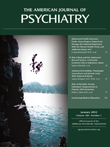Treatment Resistance and Patient Authority: The Austen Riggs Reader
This is a wonderful book about the healing benefits of psychodynamic psychotherapy among voluntarily hospitalized patients suffering from treatment-resistant major depression, schizophrenia, and personality disorders. The approach at the Austen Riggs Center (Stockbridge, Mass.), compiled in book form after being published via a number of articles in the Journal of the American Academy of Psychoanalysis and Dynamic Psychiatry, is based on the following notions that seem foreign to the current brain disease, psychopharmacological orientation of contemporary psychiatry: psychodynamically explore and understand and, in the process, help the severely disturbed patient to develop a sense of autonomy and authority.
There are thoughtful clinical and theoretical chapters on transference and countertransference dilemma, replete with compelling case examples of the usefulness of individual, group, supervisory, and team consultations as well as interventions along psychodynamic lines. There is a fascinating chapter titled “Psychodynamic Psychopharmacology” on the psychodynamics of prescribing medication, what the medication means to patients, the negative effects of medication on a purely psychological basis, and the way psychological issues can be masked by the prescription of medication, leaving the patient in his or her compliant or noncompliant treatment-resistant posture, rather than allowing for an understanding of the meaning of the treatment-resistant behaviors. There is an excellent discussion of how implementing evidence-based approaches is the least that one can do in treating these patients. Additionally, there is an emphasis on investigating the circumstances that led these patients, who have treatment-resistant conditions with many comorbid diagnoses, to the last resort of being hospitalized.
The goal at Austen Riggs is to help patients understand themselves during psychotherapy, focusing on transference and countertransference in both individual and group settings. Treatment includes the judicious use of psychotropic medication as well as respect for the patient's sense of agency in a graded hospital setting.
Such a goal is good for both Austen Riggs and the patients. However, it is a sad comment on the current state of American psychiatry. Many of these patients previously underwent numerous therapies, hospitalizations, day care, ancillary treatments, and psychopharmacological approaches. In short, they previously received the best of the evidence-based practices, but these practices were unsuccessful forms of treatment for them. Austen Riggs adds a missing “secret” ingredient, dynamic psychotherapy, to the treatment of these often psychodynamic psychotherapy-naive patients. And with such a dynamic therapeutic approach, patients often improve.
Now, had these patients been offered this ingredient and been treated by a psychodynamically oriented outpatient psychiatrist at home, they might have improved and might not have been labeled as having treatment-resistant symptoms. Had someone addressed earlier the self- and other defeating behaviors that can make a patient appear to have treatment-resistant symptoms, hospitalization might have been avoided.
Could the term treatment-resistant mean that no one previously tried, via a psychodynamic approach, to help the patient understand his or her behaviors?
This is the tragedy of contemporary psychiatry: the psychodynamic baby has been thrown out with the bath water. Rather than combining a psychodynamic approach and the judicious use of medication in the treatment of severely ill patients, the field of psychiatry has swung drastically to the overprescribing of medication and the attribution of disease, with lack of agency and treatment resistance as logical results.
As a field, we ignore studies that show that long-term psychodynamic treatments in patients with complex treatment-resistant symptoms are 96% more successful than comparison treatments (1). We ignore studies conducted over the last four decades showing that antipsychotic medications leave patients less motivated than they were prior to the use of these medications (2) and that patients who discontinue antipsychotic treatment have higher global functioning than those who continue to remain on their antipsychotic treatment regimen (3). Austen Riggs and the declining number of psychodynamic psychiatrists in the United States keep these studies in mind.
The Austen Riggs Reader is an invaluable book for academic, public sector, hospital-based, and private practice psychiatrists. By emphasizing the importance of a psychodynamic approach, this book may even nudge the field of psychiatry toward an acceptance of the efficacy of an intensive dynamic psychotherapy, in conjunction with the psychodynamically informed use of medications, and help improve the general state of in- and out-patient clinical psychiatric practice for patients with severe mental illness.
1. : Effectiveness of long-term psychodynamic psychotherapy: a meta-analysis. JAMA 2008; 300:1551–1565Crossref, Medline, Google Scholar
2. : Comparison of two five-year follow-up studies: 1948 to 1952 and 1967 to 1972. Am J Psychiatry 1975; 132:796–801Link, Google Scholar
3. : Factors involved in outcome and recovery in schizophrenia patients not on antipsychotic medication: a 15 year multifollow-up study. J Nerv Ment Dis 2007; 195:406–414Medline, Google Scholar



